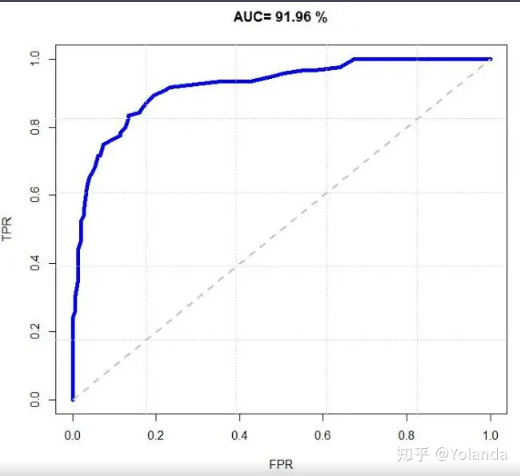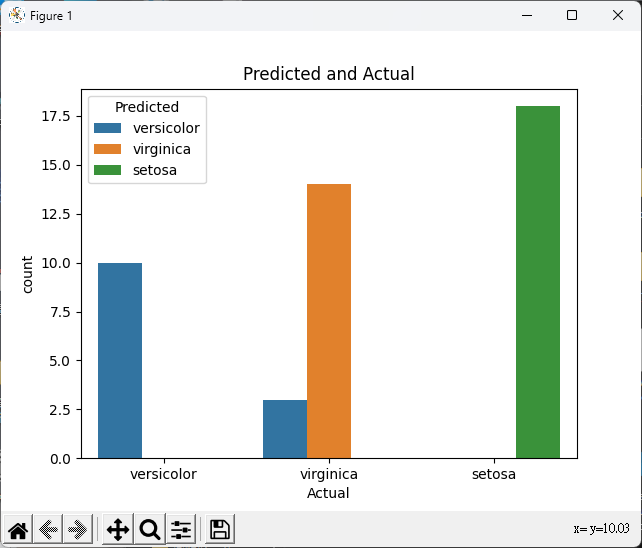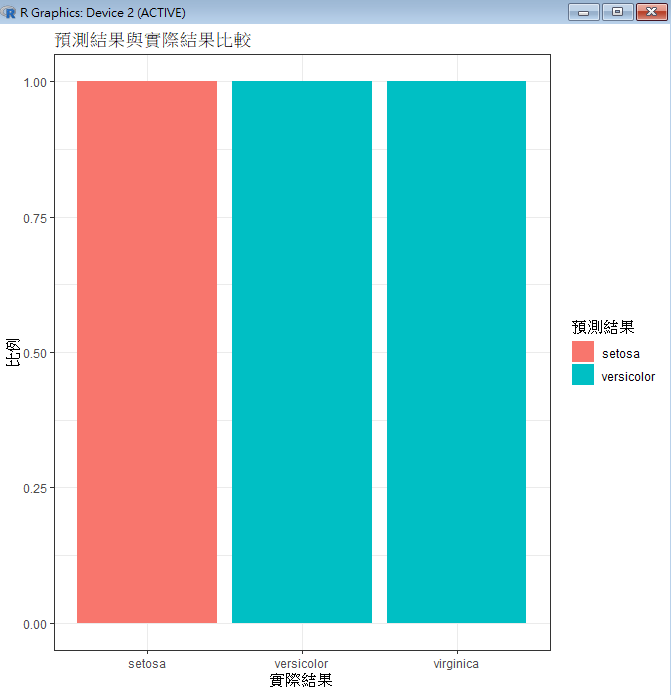混淆矩陣包括真正例(True Positives, TP)、假正例(False Positives, FP)、真負例(True Negatives, TN)、和假負例(False Negatives, FN)。
正確預測的樣本數除以總樣本數的比例
錯誤預測的樣本數除以總樣本數的比例
被模型預測為正類別的樣本中,實際為正類別的比例
實際為正類別的樣本中,被模型預測為正類別的比例
精確率和召回率的調和平均,用於綜合評估分類模型的性能

評估二元分類模型的風險區分能力。KS值越大,模型的風險區分能力越強。
評估模型的預測效果,它比較了使用模型和隨機選擇的效果。Lift值大於1表示模型的預測效果較好。
精確率和召回率之間的關係,尤其在不平衡類別問題中很有用。
import pandas as pd
from sklearn.model_selection import train_test_split
from sklearn.linear_model import LogisticRegression
from sklearn.metrics import accuracy_score, confusion_matrix
import seaborn as sns
import matplotlib.pyplot as plt
# 載入資料集
iris = sns.load_dataset('iris')
# 前處理資料
# 分離出了特徵變數 X 和目標變數 y。
# species 列(即花的種類)作為目標變數並將其從特徵變數中刪除
X = iris.drop('species', axis=1)
y = iris['species']
# 切分資料集為訓練集和測試集 (70% 訓練,30% 測試)
# 資料集被分成了 X_train、X_test、y_train 和 y_test 四個部分。
# 訓練70%、測試30%
# random_state=任意數字(seed)
X_train, X_test, y_train, y_test = train_test_split(X, y, test_size=0.3, random_state=123)
# 建立邏輯回歸模型
model = LogisticRegression()
model.fit(X_train, y_train)
# 在測試集上進行預測
predictions = model.predict(X_test)
# 評估模型性能
accuracy = accuracy_score(y_test, predictions)
print("準確率:", accuracy)
# 繪製混淆矩陣
confusion = confusion_matrix(y_test, predictions)
print("混淆矩陣:")
print(confusion)
# 預測結果與實際結果的比較圖
comparison_df = pd.DataFrame({'Actual': y_test, 'Predicted': predictions})
comparison_plot = sns.countplot(data=comparison_df, x='Actual', hue='Predicted')
comparison_plot.set_title('Predicted and Actual')
plt.show()
準確率: 0.9333333333333333
混淆矩陣:
[[18 0 0]
[ 0 10 0]
[ 0 3 14]]
# 載入必要的套件
library(ggplot2)
library(dplyr)
library(ggpubr)
# 使用內建的 iris 資料集
data(iris)
# 前處理資料
iris <- iris %>%
mutate(Species = as.factor(Species)) # 將目標變數轉為因子型態
# 切分資料集為訓練集和測試集 (70% 訓練,30% 測試)
set.seed(123)
train_indices <- sample(1:nrow(iris), 0.7 * nrow(iris))
train_data <- iris[train_indices, ]
test_data <- iris[-train_indices, ]
# 建立邏輯回歸模型
model <- glm(Species ~ Sepal.Length + Sepal.Width + Petal.Length + Petal.Width,
data = train_data, family = binomial)
# 在測試集上進行預測
predictions <- predict(model, newdata = test_data, type = "response")
predicted_classes <- ifelse(predictions > 0.5, "versicolor", "setosa")
# 評估模型性能
accuracy <- sum(predicted_classes == test_data$Species) / nrow(test_data)
cat("準確率:", accuracy, "\n")
# 繪製混淆矩陣
confusion_matrix <- table(predicted_classes, test_data$Species)
cat("混淆矩陣:\n")
print(confusion_matrix)
# 繪製預測結果與實際結果的比較圖
comparison_plot <- ggplot(test_data, aes(x = Species, fill = predicted_classes)) +
geom_bar(position = "fill") +
labs(title = "預測結果與實際結果比較", x = "實際結果", y = "比例", fill = "預測結果") +
theme_bw()
print(comparison_plot)

計算每個類別的性能指標(如精確率和召回率)的平均值。首先計算每個類別的指標,然後取平均值。
微平均計算全局混淆矩陣的性能指標,不考慮類別。首先計算全局混淆矩陣的指標,然後計算性能指標。
Kappa係數用於衡量模型在多分類問題中的性能,考慮了隨機預測的效果。值越高表示模型性能越好,通常在0到1之間。
